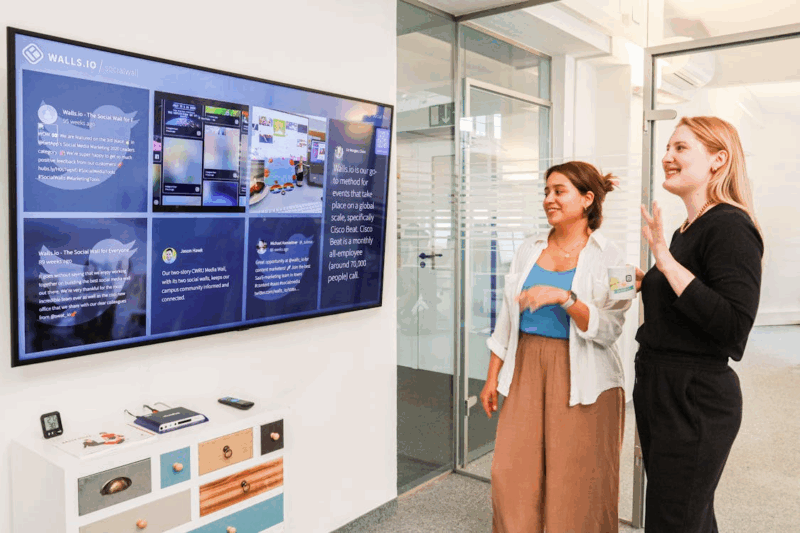
Workplaces today are evolving at a pace that few could have imagined even a decade ago. The daily grind of repetitive tasks that once consumed hours of human labor is slowly giving way to systems designed to simplify, accelerate, and reinvent the way organizations operate. What was once viewed as routine “busywork” is being transformed into an opportunity for innovation, where processes are reimagined and workflows are optimized behind the scenes.
The Hidden Cost of Repetition
For much of history, businesses relied heavily on manual, repetitive tasks to keep operations moving. Employees entered data, copied files, routed approvals, and ensured compliance through sheer persistence. While necessary, these duties drained valuable time and energy, often leaving little space for creative problem-solving or strategic planning.
Repetition creates more than monotony; it introduces inefficiencies that compound over time. Human error, delays, and fatigue accumulate, leading to bottlenecks that frustrate both workers and customers. By clinging to outdated processes, organizations risk slowing their own growth and limiting the potential of their people.
The Quiet Revolution of Automation
Behind the polished interfaces of modern tools lies a revolution reshaping the essence of work. Automation, once limited to manufacturing assembly lines, now extends into nearly every industry. Intelligent systems schedule meetings, sort emails, approve invoices, and even generate reports without the need for constant human oversight.
These capabilities are not always visible to end users, yet they fundamentally change how businesses operate. Workflows once dependent on manual repetition now flow seamlessly in the background, supported by digital platforms that learn, adapt, and optimize with each interaction.
Why Reinvention Matters
The drive to reinvent workflows is not about replacing people; it’s about empowering them. By removing the burden of repetitive tasks, businesses free their employees to focus on value-driven activities: building client relationships, innovating products, and designing strategies for long-term success.
Reinvention matters because it ensures sustainability in a fast-moving economy. Organizations that adopt smarter workflows can respond faster to market shifts, reduce operational costs, and deliver more consistent outcomes. In contrast, those that rely solely on outdated processes risk falling behind competitors who embrace adaptability.
The Role of Data and Intelligence
Data is at the core of modern workflow reinvention. Every transaction, customer interaction, or operational decision generates information that can be harnessed for improvement. When paired with artificial intelligence, this data becomes more than a record of past performance—it becomes a roadmap for future efficiency.
AI-driven insights allow organizations to predict trends, uncover inefficiencies, and highlight opportunities for optimization. Whether it’s forecasting demand in retail or identifying potential delays in logistics, data-backed intelligence provides a clearer picture of how workflows can be restructured for maximum impact.
Shaping the Future of Workflows
The shift from repetition to reinvention reflects a deeper cultural change. Businesses no longer measure success only by output but also by agility and innovation. This is where the next generation of tools makes its mark. By improving workflows with ai automation, organizations are not just streamlining processes—they are laying the foundation for more adaptive and resilient operations.
AI can integrate across departments to ensure seamless collaboration, trigger automated responses to common issues, and continuously refine processes based on real-time feedback. This creates an environment where work feels less like a cycle of repeated tasks and more like a dynamic ecosystem where people and technology thrive together.
Empowering Employees Through Reinvention
Perhaps the most overlooked benefit of rethinking workflows is its impact on employee satisfaction. Workers who spend less time on repetitive administrative duties can channel their efforts toward projects that align with their strengths and passions. This not only boosts morale but also drives innovation, as employees are more engaged when they feel their work contributes to meaningful outcomes.
The reinvention of workflows fosters a culture of growth, where employees learn to adapt alongside the systems they use. Training shifts from mechanical task execution to developing critical thinking, creativity, and digital literacy—skills that ensure long-term relevance in the workplace.
Balancing Efficiency with Humanity
While automation enhances efficiency, it must be balanced with human judgment and empathy. Machines excel at processing data and performing repetitive functions, but they lack the intuition and emotional intelligence that humans bring. Reinventing workflows means designing systems where humans and technology complement one another, each playing to their strengths.
For instance, in customer service, AI can manage basic inquiries instantly, but complex or emotionally sensitive issues require human understanding. In healthcare, automated systems can flag anomalies in medical records, but final diagnoses and care require the expertise of professionals. Reinvention thrives when both sides are respected and integrated.
Risks of Reinvention
The path to reinventing workflows is not without challenges. Overreliance on automation can lead to vulnerability in the event of system failures or cyberattacks. Ethical concerns also arise when algorithms influence decisions that affect people’s lives, from hiring to financial approvals.

Organizations must approach reinvention with careful planning, transparent governance, and continuous oversight. The invisible workforce of algorithms and platforms must be held to the same standards of accountability as human teams to ensure fairness, reliability, and trust.
Looking Ahead
The transition from repetition to reinvention signals a broader transformation in how we define work. Businesses that invest in redesigning workflows will discover not only greater efficiency but also a more engaged workforce, stronger customer relationships, and the agility needed to thrive in a complex world.
This is not merely a technological upgrade—it’s a cultural shift that redefines value creation. By embracing innovation behind the scenes, organizations unlock new possibilities for growth and ensure they remain competitive in a landscape where change is the only constant.
Conclusion
Repetition once shaped the rhythms of work, but reinvention is setting the tempo for the future. By rethinking workflows, businesses move beyond the limits of human endurance and into a realm where technology enhances rather than replaces human capability.
Behind the scenes, invisible systems handle the monotonous, leaving people free to focus on what truly matters—innovation, creativity, and connection. In this balance lies the promise of a workplace where efficiency and humanity coexist, and where reinvention becomes the standard for success.










